Review Article :
Protection of the Environment and Sustainability
goes hand in hand as one mechanism compliments the other. On the other hand,
Sustainable Economic Growth can only be achieved if it is linked to
Ecologically Sustainable Development (ESD). Sustainability can best be
described as Living within the limit of what the environment can provide while
safe guarding the environment for future generation, Understanding the many
connections between environment, society and economy, and equitable
distribution of resources and opportunities. Uncontrolled Green House Gas
Emission has caused global warming, sea level rise, change of weather pattern
(e.g severe untimely rainfall at unusual location), and alarming increase of
natural disasters (Cyclone, Hurricane, Floods, Tsunamis and other natural
phenomena). Third world countries are worst affected by the Green House Gas
Emission and Global Warming Impact and Bangladesh is one of them. UN has taken
a leading role and guiding the world to work together not only to reduce
pollution but to make significant contribution in achieving pristine
environmental conditions. Under the umbrella of UN, the world is now taking
collective action to reduce Green House Gas Emission and Tackle Global Warming
Impacts. Concerted efforts must be taken in an accelerated pace to educate at
Global, Regional, National and Community level, about the benefits of the
above-mentioned concepts and introduce incentive-based programs for mass
participation. The environmental cleanup process should start from individual
home and gradually extending to community, national and global level to achieve
accelerated measurable success. An opportunity must be created to reform land
use change, replacing pollution producing industries with environmentally
sustainable practices. It is overdue to put through a series of EPA recommended
processes to clean up the contaminated land, soil and water and secondly,
introduce and adapt an Ecologically Sustainable Development program. The
long-term goal should be to expedite and spread the land use change practices
to relace the contaminated practices and introduce mandatory adaption of
environment friendly technology for the ongoing industrial and business
activities to reduce pollution while contributing improving the environment.
With a global collective action this world can be transformed into a heaven on
earth. Ecologically Sustainable Development,
Protection of Environment and Environmental Management of Land, and Water
Sensitive Urban Design, are the fundamental concepts and principles to build a
sustainable future world. To put a halt to further environmental degradation,
to begin pollution cleanup caused by the western industrial revolution in the
past, to reduce the greenhouse gas emission and to adapt with the climate
change impact sustainable development practice has no alternative. Since the
introduction of Quadruple
Bottom Line (QBL) concepts, Australia has adapted a sustainable development
practice in its highest capacity in every sphere of development and its strict
compliance is protected by regulatory requirements [1]. The purpose is to put a
halt to the pollution, promote environment friendly land use change and upgrade
the existing land use to make it more environment friendly. The primary aim is
to identify the present environmental and functional problems and stresses.
Identify as far as possible, the potential capabilities, constraints and
opportunities as they apply to the future use. Formulate the short term and
long-term actions plan and formulate the environmental management scheme. The
goal is to spread the land use change practices to other pollution producing
industries and businesses, clean-up the contaminated land, soil and the
groundwater through a series of EPA recommended established remedial measures. All
ongoing businesses are to be encouraged to adapt pollution free technology and
reuse and recycle raw and processed materials where possible and making
environmental auditing mandatory for all industries and businesses.
Environmental auditing will identify where to make improvement and will make
the business more sustainable and profitable in the long run. This practice
will bring positive benefit to environment, society and economy. During the
western industrial revolution people had very little or no knowledge about the
environmental pollution and how it can affect our globe that we live in and the
deleterious effect that it would cause to our ecosystem. The massive
unplanned growth of industries has produced our greatest concern about: Global
Warming, Green House Gas Emission, Sea Level Rise, Salinity Increase, Change of
Weather pattern (too much and too little rain fall, untimely rainfall, rise of
temperature, Tsunamis and others), an increase in Natural disasters (Cyclone, Tornadoes,
Floods, Tsunamis, Hail Storm, Severe Bushfire and others), occurring untimely
and at unusual locations. Based on the foundation of environmental management
of land and applying the concept of ESD, the current project is an attempt to
make a positive contribution for the development of the local environment which
is constantly being polluted by the industrial expansion. The concept of sustainability was
first introduced in a report entitled Our Common Future (Brundtland Commission
Report) [1]. Prepared under the direction of United Nations by the World
Commission on Environment and Development, the report sought to create a future
which equally balanced economic, social and environmental needs, with the
addition of governance. This is known as a Quadruple Bottom Line approach [1].
With this declaration in mind, sustainable development was defined as
Development that meets the needs of the present without compromising the
ability of future generations to meet their own needs. In its full
conceptualization, a sustainable world has been suggested to include enough
access to resources for even multiple billions of people to meet their various environmental and
socio-economic needs, as well as for multiple millions of other species to
coexist and thrive with humans, as both human and rest of the nature continue
to evolve [2]. This vision can include global scale aspects such as healthy
biosphere, stabilized world human population, intra- and intergenerational
equity, universal human rights, and the resolution of social and economic
challenges of the worlds poor, among other mega challenges and opportunities,
such as our energy future [3]. Since the publication of Brundtland Report the
global awareness in achieving a sustainable world in individual, communal and
national level is steadily increasing and more people than ever appear to be
learning about and trying to take more substantiate, more frequent and or more
numerous actions in reducing energy consumption, improving water quality,
recycling or reusing waste product, upgrading their own or their stakeholders
heath, and assisting in improving their communitys socioeconomic sectors. Ecologically Sustainable
Development requires the effective integration of economic and environmental
considerations in economic development activities. To maintain this process
everyone engaged in decision making and development activities must be
accountable and adapt full scale Regulatory Compliance. Ecologically
Sustainable Development can be achieved through rational use, enhancement and
conservation of resources so that ecological processes are maintained, and the
total quality of life continues to increase forever. ESD aims to meet the needs
of todays generation and conserve healthy ecosystems for future generations.
This requires prudent management and use of environmental resources which form
the basis of the economy so that resources are not only maintained but where
possible, improves their range, variety and quality and enhance sustainable
growth. Bangladesh is making good progress. Its GDP has never gone down below 5
for many years even under complex political turmoil; otherwise the growth rate
would have been much higher. Political stability is a precondition for
achieving ESD. Public awareness coupled with strict adherence to Legislations,
comparable to international standard must be formulated to protect and maintain
ESD. Ecologically sustainable development must embrace the following two
approaches: •
Consideration and Integration of
National Economic, Social and Environmental implication with wider Global
Community, Atmosphere, Biosphere, Hydrosphere and
Geo-sphere; and •
Adherence to long term view in
Decisions making in opposed to short term view. Ecologically sustainable path of
development will reduce the likelihood of serious environmental impacts arising
from economic development activity. ESD, means changing our patterns of
resource use, including improvements in the quality of our air, land and water,
and in the development of new, environmentally friendly products and processes. Figure
1: Graphic representation of Soil Ecosystem (source:
Rimmer, 1999). The following simple but very
important steps are involved in protecting the environment. These steps are as
follows: Identification
of Potential Pollution Elements: (a) Water
Pollution (Surface Water and Ground Water) (b) Air Pollution (c) Climate Change
(d) Noise Pollution (e) Land Pollution and Waste (f) Odour and (g) Human
Health. Littering of public places is completely unacceptable. Apart from
obvious visual impacts, litter pollutes our Land, Air and Waterways and foreshores, blocks
drains, harms the health of wildlife, and can be a fire hazard. Action
to be taken to protect Pollution Elements: Effective
positive actions must be taken to minimise further environmental degradation.
These activities are well performed by: •
Educating nation about the
importance and benefits of environment protection •
Protecting and conserving natural
resources •
Recycling and reusing resources
and •
Use of more energy efficient or
environmentally friendly products. Such activities are not only
beneficial to the environment but collectively they are great contribution to
individual savings and significant contribution to national economy. Knowledge
Dissemination: Environmental awareness can be greatly
enhanced through education via academic curriculum, through various electronic
Medias and through mobile phone networks. Pollution
Control: Pollution has many sources such as:
Land Pollution (from littering and waste disposal), Air Pollution [4] (Air
pollution is the toxic particulates and gases suspended in the air that are
created by human activity such as driving, producing electricity, and
industrial pollution and others), Noise Pollution (noise through vehicle,
industrial activities and real estate construction and other noise source),
Odour Pollution (resulting from the release of H2S and other gaseous substances
due to biochemical
activity of microorganism) and Biological pollution (presence of pathogenic
bacteria causing harm to human health). Recycling:
Mandatory recycling practice to be introduced in every house hold, every
office, organization, educational institution. Protection of the sanctity of
public places (such as park, playground, recreational centre etc) by imposing
penalty for littering and making it easier for visitors to dispose off their
litter by installing more collection points and by frequent collection of
litters from public places by the appropriate authority. Water
Conservation: Water conservation [5] through
education and by regulations is to be introduced in every sphere of life.
Everyone should be educated and should have clear understanding about the
importance and necessity about water conservation. Few examples of water
conservation are: •
Use of rain water (or recycled
water) in the garden and household washing and toilets •
Use of more water efficient
products within the house such as reduced flow shower heads and dual flush
toilets in every house hold and office blocks •
Less frequent use and only
washing full loads of clothes in the washing machine •
In Australia installation of rain
Water Tank has become a mandatory requirement for any new building construction
to obtain occupancy certificate from the Council. Moreover, construction of
Artificial Wetlands has also been made mandatory for all development of new
suburbs [6]. This will bring multiple benefits to water resources management,
water conservation, and environmental development and put in place the WSUD
(Water Sensitive Urban Design) concepts. Promotion
of Green, Renewable and Reusable Energy: In Australia
Coal Generated Electricity is still the dominant source of Energy but the
awareness and popularity of green energy is rising. In Tasmania power is
predominantly sourced from hydroelectricity. Solar energy and Wind energy are
already in use and their popularity is increasing rapidly and network
increasing. Energy
Efficient Products: Nationwide encouragement must be
carried to use energy saving products (such as long-life electric bulbs, AC,
Refrigerator, Computers, Mobile phones and energy saving sensor must be
attached where applicable) and their easy availability must be ensured.
Incentives should be provided to the manufacture of energy efficient products.
Other electrical appliances not mentioned above should also be energy efficient
products wherever possible. Land
may be considered as the mother of all resources asit supplies all the food (naturally grown or we grow them on soil)
on which all living creatures survives on and it becomes the foundation of upon
which all structures are built (Dream homes, business, Industries etc.). It
supplies all the natural material that is required to build all structures. All
precious natural resources are hidden underneath. Sustainable land management
means managing land without damaging ecological processes or reducing
biological diversity (Figure 2). It
requires the maintenance of the following key components of the environment: •
Biodiversity: the variety of
species, populations, habitats and ecosystems; •
Ecological
integrity:
the general health and resilience of natural life-support systems, including
their ability to assimilate wastes and withstand stresses such as climate
change and ozone depletion; and •
Natural capital: the stock of
productive soil, fresh water, forests, clean air, ocean, and other renewable
resources that underpin the survival, health and prosperity of human
communities. Land
is often managed for multiple benefits, such as agricultural production,
biodiversity conservation, water quality, soil health and supporting human
life. To ensure long-term sustainability, land managers need to consider
economic, social and environmental factors. Sustainable land management
includes: (1) Application of environmental management system, (2) Protecting
native vegetation through best management practice and (3) Monitoring and
Evaluation. Critical
Evaluation, interpretation, of the physical and social limitations on
urban and semi-urban land use change and devise sustainable development and
management strategies includes the following items: •
Concepts
and issues involved in the discipline of land resource management. •
Composition,
structural functional, economic, legal, risk and social aspects of land
management. •
Responsible
environmental ethics and aesthetic awareness with respect to the management of
land. •
Observe
natural and cultural phenomena of land resource management. •
Interpret
or analyze their observations of responsible environmental ethics and aesthetic
awareness with respect to the management of land. •
Prescribe
alternative opinions by describing constraints and limitations. The Water Sensitive
Urban Design is a new Australian Approach to urban planning, compared to the
wider international approach of integrated planning and management [7]. The
integrated management combines the land and water management with the addition
of natural vegetation as part of architectural design of urban landscape to
provide a natural look while adapting more economical and environmentally
appropriate solution. WSUD has a key relevance to Ecologically Sustainable
Development. In its broad context, WSUD encompasses all aspects of integrated
urban water cycle management, including water supply, sewerage and storm water
management. This new approach is based upon the premises that the processes of
urban development and redevelopment need to address adequately the
sustainability of the water environment, as water is increasingly seen as a
limited finite resource. The conventional municipal management is seen as
being: •
Wasteful
of water resources; •
Wasteful
of public infrastructure; and •
Detrimental
to Riverina, estuarine and marine environment. By
contrast, a WSUD based approach adopts a planning and design approach that aims
to integrate the following opportunities into the built form of cities and town
(Figure 3): •
Detention
of stormwater, rather than rapid conveyance; •
Utilization
of stormwater to conserve potable water; •
Use
of vegetation for filtering purposes; •
Water
efficient landscaping; •
Protection
of water related environmental, recreational and cultural values; •
Localised
water harvesting for various uses; and •
Localised
wastewater treatment system. Figure 3: Classic Example of WSUD in Japan (source:
UTS academic resources 2013). WSUD
aims to find ways to bring considerations of the water environment and
infrastructure service design and management opportunities earlier into the decision-making
processes associated with urban planning and design. WSUD has emerged as a
practical planning and design approach that seeks to bring a single management
framework to the issues that traditionally have been considered in isolation [8].
The range of relevant issues Water Sensitive Planning Guide for the Sydney
Region is wide and includes: •
Water
quality in streams and water bodies •
Aquatic
and riparian ecosystems and biodiversity •
Flood
management •
Water,
sewerage and drainage infrastructure •
Erosion
and sediment control •
Efficient
water use •
Stream
management •
Scenic,
aesthetic, recreational and cultural aspects of water bodies •
Catchment-wide
management of soils, forests, estuaries, coastal waters and other natural
resources. The
wisdom guides human being to respect the law of the land. Fulfillment of
Regulatory requirement has become an obligatory requirement for everyone
involved in all development tasks. Some of the highlights of Australian
legislations are given below: (a)
Committing Environmental Offences in the Eyes of Law if: •
Disposal
of waste-harm to environment. •
Pollution
(air, water, and land) exceed recommended threshold limit. •
Leaks,
spillages and other escapes. •
Emission
of ozone depleting substances. •
Oceans,
seas and other water bodies are polluted by oil and noxious substances. •
Healthy
Biodiversity becomes endangered. •
Climate
Change and Environment Protection becomes affected. (b) Failure to notify pollution incidents. Project Spatial
Location: The
suburb of Minto located within the Global Coordinate System (latitude and
longitude) of 34.0265oS and 150.8507oS (Figure
4b). The suburb of Minto (post code 2565) is a part of Campbelltown City
Council which is again a part of Cumberland State Districts [9]. The project
area (Minto) was named after the viceroy of India and Earl of Minto. The Minto
area is somewhat naturally defined by Bow Bowing Creek in north-eastern
boundary and Myrtle Creek in the south-eastern boundary Map. In terms of
district boundary, Minto is bounded by Ingleburn in the north, Minto height in
the East, Leumeah in the South and by St. Andrews in the east. Site
Specification: The
actual site is a small land located on Ben Lomond Road at the intersection of
Minto Mall boundary and Ben Lomond Road (Figure
4a). The site is currently occupied by a Service Station which is going
through the process of decommissioning. Prior to that the land was
traditionally used for agricultural purposes. Physiographic or
Physical Settings: The
greater Campbelltown Catchment is characterised by two distinct physiographic regions (Figures 4b and 5). In the south and
east, the Georges river and its right bank tributaries flowing northwards from
relatively high elevation (300>400 meters) which was formed by up-warping of
Hawkesbury Sandstone, resulting in the typical plateau and deep ravine
topography. Figure 4a: Location of
Minto Project Area. The
second physiographic region is found north and west of the main channel. To the
west, the Wianamatta Shale series overlie the sandstone and form the gently
sloping, well rounded topography. The elevation of these region is generally
well below 100 meters. Their floors are occupied by wide flood plains, and the
valley sides are gentler than those found in the sandstone regions (Figure 5). Figure 4b: Physiographic
Map of Campbell town District. Figure 5: Topographic Map
of Campbell town Districts. (source:
LGA development report Plan, 1973). Geology: The Sydney Basin came into existence
because of earth movements during the mid-Permian (270 million years ago) and
for the next 70 million years, Permian Triassic was subject to periodic episodes
of marine transgressions and regressions which alternately inundated and
exposed the developing basin [10]. The Geology of Greater Campbelltown and the
adjoining areas are of Triassic Age, and are broadly sub-divided into the
following three major successions: •
Wianamatta
Group, •
Hawkesbury
Sandstone Formations and •
Narrabeen
Group, •
The
Hawkesbury Sandstone conformably overlies the Narrabeen Group and the
Wianamatta Group conformably overlies the Hawkesbury sandstone. Soil Classification and Characteristics: The soil of
Campbelltown has been mapped and classified by [11]. He found that parent rock
played the most important role in distribution of soils. In order of importance
main soil associations are: •
Hawkesbury
Associations (on Hawkesbury Sandstone) •
Hammondville
association (on Passage Beds) •
Cumberland
Association (on Wianamatta Shales) •
Elderslie
Association (on Old River Terraces) and •
Nepean
Association (on Young alluvium) A
field work has been completed. An examination of soils at outcrop (Figure 3)
has confirmed that the project site is situated on the foundation of Wianamatta
Shale (Figure 6a). Figure 6a: Soil Landscape
Map of Campbelltown. The
soil characteristics range from Hammondville Association to Cumberland
Association as properties of both Associations has been observed in the exposed
soil. The detailed Soil Landscape Mapping (Wollongong-Port Hacking, Soil
Landscape Series-Sheet 9026-9129, and Edition 1 Reprint) classified soils of
greater Campbelltown (Minto) area as follows: (1) Blacktown Soil (bt)
Assemblages (bt) belongs to Residual Landscape association; (2) South Creek
(sc) Assemblages belonging to Alluvial Landscape Association; and (3) Lucas
Heights (lh) Assemblages belonging to Colluvial Landscape Associations. The
project area lies on the Blacktown Soil (bt) Assemblages (Figure 6b). Climatic
Conditions: The
climate in this area is classified as temperate maritime, with warm to hot
summers and cool to mild winters. Frosts occur occasionally in the cooler
months. Rainfall and
Temperature: Rainfall
distribution throughout the year tends to be bimodal, that is two relatively
wet period periods January and June are separated by relatively lower rainfall
throughout the year. Early January 2013 and Late February 2013 has experienced
the two most heavy rainfall events, making a record of 50 years high. This
severe unusual rainfall event during uncommon periods is a strong indication
yet that weather patterns are changing. Maximum daytime temperature averages
range from 17oC in July to 28oC in January and 17oC
in July to 30oC in January, indicating slight increasing in
temperature (2oC) during summer. January 2013 was recorded as the
hottest month in the century during this time in some days temperature was
recorded as high as 46.5oC (Table
1). Winds
are chiefly light and variable with a tendency towards westerlies in the winter
months. In summer months, particularly in the afternoon, wind tends to be
easterly. Severe floods have been experienced in 1873. The greatest flood this
Century was in 1956. Major and prolonged (up to 14 months) droughts have
occurred in the past. Droughts exceeding three months are not uncommon and
droughts of several months can be expected in any year. Current
State of the Environment in Campbell town Land Resources: Traditionally
Campbelltown has been identified and recognised as important farm land areas
and huge abundance of mineral resources are also stored underneath.
Campbelltown is the fastest growing district in Sydney because of its huge Land
Resources. Development of new suburban areas, infrastructure, industrial and
businesses are taking place at a much faster rate than any other parts of
Sydney. Water Resources: Todays water
resources management is focused on optimum usage, minimum wastage, providing
greater benefits to the environment and maintenance of a vibrant ecosystem and
greater social acceptance. The new approach of integrated management practice
faces challenges effectively, conserve our resources efficiently and above all
to achieve environmentally sustainable development. The
key objective here is to close the water loop by preventing wastage and
pollution of water resources and re-use water whenever possible. Campbell town
is located within the catchment of two Principal Sydney waterways, The Georges
River and Nepean River Systems. Overall water quality in the catchment remains
fair. Water Quality Monitoring is carried out in line with the National
Guidelines for Fresh and Marine Water Quality [12]. Under the updated strategy,
risks associated with Recreational waters are handled as per NHMRC guidelines [13]. Air Pollution: Air pollution is
normally defined as the contamination of the oxygen and atmospheres around us [14].
Since 2008, pollutant data s recorded at monitoring stations are represented as
the Regional Air Quality Index (RAQI) The RAQI based on the five criteria
pollutants (ozone, carbon
monoxide, sulphur dioxide, nitrogen dioxide and air particles) plus
visibility (NSW Standard) (Figure 7).
The RAQI values are categorized as follows: Very good: 0-33; Good: 34-66; Fair:
67-99; Poor: 100-149; Very Poor, 150-199; and Hazardous: >200. When compared
with previous year data it shows that the RAQI has declined confirming
significant achievement in Air Quality Improvement. Figure 7: Comparison of
Macarthur RAQI and Sydney South West AQI (2011-12). Biodiversity: Life on the earth
comprises at least 10 million species of plants, animals and microbes, of which
small organisms such as anthropods and microbes comprise 95 percent.
Biodiversity is the web of life. It is the variety of living things - the
different plants, animals and micro-organisms, the genes they contain and the
ecosystem of which they form part of. Biodiversity is essential for our
survival sustainable functioning of agriculture, forest and natural ecosystem
and provides benefits such as: (1). Ecosystem services such as clean air to
breathe; and (2). biological resources such as food and medicines. Biodiversity
reserves include vegetation with local indigenous plant and animal species (Figure 8) reserves include vegetation
with local indigenous plant and animal species. Figure 8: Rabbits
population in Campbell town. The
Marsden Park Water wise Garden was designed to educate the community on types
of gardens and plans that require reduced water maintenance and that could
enhance local biodiversity (Figure 9). Figure 9: Marsden Park
Multipurpose Garden to enhance local biodiversity. Sustainability: After the
Brundtland Commission Report, the Council of Australian Governments endorsed
the National Strategy for Ecologically Sustainable Development [15]. The
strategy further defined ecologically sustainable development (ESD) as: Using,
conserving and enhancing the communitys resources so that ecological processes,
on which life depends, are maintained, and the total quality of life, now and
in the future, can be increased. In pursuing the incorporation of sustainability,
Campbelltown aims to minimise wastes, conserve water resources, reduce energy
consumption and promote solar energy, recycle and reuse where appropriate,
conserve environmental assets and reduce greenhouse gas emissions (Figure 10). Figure 10: Sources of
Alternative and renewable energy (solar energy). Proposed
Land Use Change Project Current Land Use: The project area
is currently being used as a petrol gas service station (Photo. 5,6,7,8).
Service stations play a dominant role in polluting the surrounding environment,
the soil on which it was built and occasionally it also pollutes the
sub-surface environment including the groundwater resources. A consequence
which is very much undesirable. Proposed Land Use
Change (Child Care Centre): The proposed land use change will bring two-fold
benefit to the society: (1). It will clean the polluted environment; and (2). A
good child care centre has the capability to train the children to become an
ideal citizen for tomorrow. The remediation will bring long term
sustainability. This is a great opportunity to bring multi-faceted benefit
to the soil, land, water, biodiversity and environment. It is an ideal example
of ESD. Physical Settings: •
There
should be minimal physical constraints because: •
Soils
are already prepared for the construction of physical structures - an
attribute. •
There
is no vegetation cover as the site is fully concreted to make it suitable for
the service station - an attribute. •
Slope
adjustment has been completed for the service stations- an attribute. Permanent Site
Decommissioning: Decommissioning
begins with the following tasks: (1) The tanks made safe, together with the
corresponding pipe works, and safe removal from installation site; (2) The
dispenser removed, and the electrical installation disconnected; and (3) The
separator/interceptor cleaned. Following the closure, the site will remain
dormant for a considerable time as per EPA requirement. Soil-Gas Survey
and Site Investigation: A full-scale site assessment must be carried out by
a professional licensed Assessor. The assessment will conform Australia
guidelines [12]. The Site assessment will be followed by a detailed field
investigation as per EPA guideline (detailed in: www.esdat.net/environmentalstandards/Australia/service
stnsites.pdf)
and will be documented in a Site Assessment Report. Groundwater
Contamination and Assessment: Groundwater samples will be collected
and analyzed and remediated following EPA Australia recommended procedures. If
contamination found then the extent of off-site migration will be mapped, and
appropriate management practice will be put into practice to remediate
contamination to make it safe for all users employing full regulatory
compliance. Remediation of
Contamination: The
remediation strategies will consider the environmental impact of the actual
remediation operations, including the impact on the air quality, water quality,
noise level and waste management. EPA preferred technique will be followed to
remediate contaminated soil and/ or groundwater at service station site
[12,15-17]. Benefits of
Remediation: The
treatment will reduce the amount of VOCs including benzene. Cap and Contain
strategy, both on-site and off-site controlled remediation will eliminate the
need to use valuable landfill space in metropolitan areas. Community confidence
will be greatly increased. Reducing potential public health risks. A great
boost to environmental health. Risk Assessment: Risk assessment
has become an essential integral part of quality assured environmental
management systems [18]. NSW Department of Planning Environmental risk analysis
deals with the probability of an event causing a potentially undesirable
effect. Risk assessment has become an objective tool to set standard, set
priorities and help in decision making (Figure
11). Figure 11: Hazard Analysis
Methodology (Department of Planning, NSW, 1994). Australian
Approach to Risk Assessment: The hazard assessment introduces
assessment and calculated of Q value. A Q value greater than 0.1 will lead to
further examination of environmental hazard including other pathways of
environmental contamination. The Environmental Impact Assessment (EIA) process
as undertaken in Australia is a qualitative environmental risk
assessment [12]. Canada has three step (Figure
12) processes of health risk assessment and risk management (1) Hazard
Identification, (2) Risk Estimation and (3) Option Evaluation [19]. Figure 12: Canadian Model
of integrated Risk Management. An
EPA Certificate on No Further Action Letter can only be issued if: All previous
requirements have been adequately addressed, All surface and sub-surface soils
have been declared free from contamination and is suitable for redevelopment, All
sources of groundwater contamination have been eliminated, Ambient soil and
groundwater quality standards are not violated, All hazardous metals and/or chemicals
including VOCs have been removed as practically as possible; and EPA has
determined that all cost recovery issues have been resolved. Meeting Community
Concerns and Complaints: Community Engagement and meeting their concerns and
complaints are part of the process for any development in Australia. Meeting Legal
Requirements and Obligations: Remediation of contamination is a legal
obligation and must be completed to the full extent to obtain a license to
operate a child day care center. Certificate from
Day Care Licensing Authority: The authority will only issue an
operating license when all the requirements have been fully met [20]. Council
Development Approval (DA) Certificate: Council will only issue DA Approval
Certificate once they are fully satisfied that the application package had met
fully the legal and other requirements. The
proposed land use change will be a significant positive contribution to the
local environment in general and at the same time it will help clean up a
contaminated site. The cleanup process will put a permanent stop to the going
process of contamination of the surface soil and to some extent sub-surface
soil and possibly shallow groundwater aquifer. The remediation will bring long
term sustainable environmental development to the area. The multi-faceted
benefit to the soil, land, water, biodiversity and environment of the local
government area is a significant forward positive step in bringing long term
sustainable environmental development for Australia. The site assessor will
submit detailed reporting in several stages: Stage 1: Preliminary Work
Plan Stage 2: Site Assessment
Report Stage 3: Draft Remedial
Action Plan and Stage 4: Final Report,
including Site Validation. The
purpose of this project is to bring multiple benefits to the environment and
social development: •
To
put a halt to the pollution caused by the existing practices, •
Clean-up
the contamination, •
Establishment
of environment friendly practices and •
To
make significant contribution in social development through the establishment
of a Child Day Care Centre. The primary aim is to identify the
present environmental and functional problems and stresses. Identify as far as
possible, the potential capabilities, constraints and opportunities as they
apply to the future use. Formulate the short term and long-term actions plan
and put those environmental management schemes in practice to make long term
contribution for Australian environment. The immediate goal is to decontaminate
land, soil and the groundwater through a series of recommended established
remedial measures. The long-term goal is to spread the environmentally friendly
land use change replacing pollution producing enterprises and upgrading all on
going enterprises by adapting more environment friendly technology. In
Australia for any development project to go ahead public participation is part
of the decision-making process creating greater community confidence. The
community will be notified about the level of contamination detected, the site
has been remediated with full regulatory compliance, site validation report
will be submitted to EPA
and the regulators (EPA) will issue a certificate of no further action
required, as the soil and groundwater contamination have been detected,
remediated and potential public health risks has been minimized. Ongoing monitoring practice will protect
of the environment from potential future contamination. The main water source
of the City of Campbell town is The Georges River and The Nepean River Basin
Catchment. The goal is to make significant progress in water conservation and
improving water quality by putting in place integrated resource management and
development practices. As part of integrated management practice, maximum
utilization of Rain Water will be prioritized. In Australia, occupancy
certificate for all new building (domestic and
industrial) construction has been attached with mandatory installation of
rainwater tank. Moreover, construction of Artificial Wetlands has also been
mandatory for all development of new suburbs. This will bring multiple benefits
to water resources management, water conservation, and environmental
development, put in place the WSUD to achieve ESD. Due
diligence Risk Assessment has been made as a mandatory task for any new
development construction and must be carried out by licensed experts. They will
make sure that step by step risk assessment elements have been taken into
consideration in establishing the proposed development project. An EPA
Certificate on No Further Action Letter can only be issued if: All previous
requirements have been adequately addressed, All surface and sub-surface soils
have been declared free from contamination and is suitable for redevelopment, All
sources of groundwater contamination have been eliminated, Ambient soil and
groundwater quality standards are not violated, All hazardous metals and/or
chemicals including VOCs have been removed as practically as possible, EPA has
determined that all cost recovery issues have been resolved. For
greater success in any initiative the government must play the leading role to
educate the public because of the past miss deeds and lack of knowledge caused
enough damage to the planet due to industrial revolution in which Australia
also took a leading role along with Europe and North America. Wherever possible
pollution producing industries and facilities should be replaced with
environment friendly institution and enterprise. Where replacement is not
possible they should be renovated and/or upgraded with the most modern
environment friendly technology so that pollution producing can be brought down
to an absolute minimum. Industry
sector and urban areas produces the highest amount of greenhouses gas emission
(about 70%) and urgent actions are needed to a curb them without further delay
by creating more eco-friendly parks wherever possible. Very old building (such
as asbestos associated and other harmful construction) should be demolished and
replaced with WSUR construction (e.g. Appendix. 2,3). Heritage Listed Building
must be preserved but they should be upgraded and be given the best possible
environmentally sustainable facelift so that they play a leading role in show
casing WSUD and become the focal point of sustainable development which will
encourage others to follow suit. To do that Government has to take the leading
role and provide incentives to encourage general public because public
participation always brings success. Petrol
and diesel used in Automobiles and in many industrial sectors is a major source
of pollution to the environment. Environmentally friendly management practices
must be put into practice and it can the done in the following ways: •
Production
of environment friendly automobiles should be given the highest priority
(example hybrid car, solar car or wind driven car) •
Renewable
eco-friendly energy source should be readily available and where possible
should be used to replace petrol and diesel and •
Service
station should be more vigorously regulated and their distribution in urban
area should be reduced while setting up some new ones in rural areas and making
it more environment friendly with modern environment friendly equipment and
setup. Old
style and design Heating and Cooling System should
be replaced with 5 star rated systems. Housekeeping system should be improved
and its operation should be fitted with sensor system i.e. when not needed it
can go into sleep saving energy and making it more environment friendly and
sustainable. Lighting System is an essential part of our daily life without
light our life would be nonexistent. Energy efficient and long-life bulbs
should be used in all walks of life. Sensors should be attached to most of
light sources which are not frequently used. Nationwide program should be
organized to educate public about the importance and benefits of energy savings
and train them up so that they become efficient user of energy and be responsible
and take the initiative to switch them off when not in use, which would be a
great favor to the environment. Use
of normal Plastics (such as water bottle, polyethylene bags and other products)
should be replaced with biodegradable ones. Its use should gradually be limited
and replaced at a much faster rate with environment friendly alternatives (for
example all park should be provide with drinking water taps and people should
be advised that those facilities have been installed and there is no need to
bring water bottles with then anymore and in fact government may consider a ban
in bringing those items to public amenity parks. Use of Computers, Mobile
Phone, and other electronic devices has become part of our daily life. Computer
and Mobile Phones
has brought revolution to out communication technology and many more surprises
are yet to come but they are all energy dependent. Use of Computer, emails and
web browser system has successfully reduced paper usage to its minimum making a
great contribution to the environment. But on the other hand, it has created
two big problems: (a) It has significantly increased the usage of energy; and (b)
Producing more greenhouse gas emission which is not desirable at all. One
suggested solution could be a mandatory switch off and unplug computers and
other energy dependent equipments during night time and/or when not in
operation for a significant amount of time. 2.
Cortese AD.
Vision of Sustainability in 2050 (2010) Second Nature, Washington DC, USA. 3.
Lovins A.
Reinventing Fire: Bold Business Solutions for the new energy era (2011) Chelsea
Green, White River Junction, Hartford, Vermont, United States. 4.
Alam MS.
Second-hand Tobacco Smoke (ETS)-Findings of an Australian case study and how
Dhaka can reap the benefit from the research outcome (2018) The International J
Social Sciences and Humanities Invention 5: 4959-4968. https://doi.org/10.18535/ijsshi/v5i9.01 5.
Alam MS.
Wastewater Stabilization Ponds (WSP)-An ideal low-cost solution for Wastewater
Treatment around the World (2018) J Res Env Sci Toxicol 8: 25-37. 6.
Alam MS. Constructed wetlands-Australian environmentally friendly natural
wastewater treatment system-an ideal low-cost solution for Bangladesh (2018) Int
J Agri Env Sci. 9.
The New cities
of Campbelltown Camden and Appin, the future Plan (1973) Council Report,
Australia. 10.
Sydney Basin (2016) NSW Department of Planning,
Industry and Environment, Australia. 11.
Walker et al. (1060). The Australian Soil Resources
Information System. 12.
Guidelines for Fresh and Marine Water Quality. Australian government
initiative, Australia. 13.
NHMRC (2008) Australian Guidelines for Water
Recycling: Managing Heath. 14.
NSW (1992) Ecologically Sustainable Development in New
South Wales, Australia. 16.
NSW EPA (POEO, Act 1997) Noise Guide for local
Government: Part-1 17.
Waste Avoidance & Resource Recovery Act 2001, New South Wales
Government, Australia. 18.
The Risk Assessment Guidelines of 1986 (1986)
Environmental Protection Agency, United States 19.
The Canadian Environmental Protection Act, 1999 (CEPA
1999) 20.
Licensing and
monitoring of child care providers and child-placing agencies (2014) The
General Laws Rhodes Island. https://law.justia.com/codes/rhode-island/2014/title-42/chapter-42-72.1 *Corresponding author: Sheikh Mahabub
Alam, Director of Technical Operations, Australasian Water and Environmental
Services (AWES) Pty. Ltd, Sydney, Australia, E-mail: mahabub580701@gmail.com Citation: Alam
MS. Ecologically sustainable development (esd) useful australian
land use Environment, Sustainable, WSUD,
Sustainability, Ecosystem, Biodiversity, Greenhouse gas emission, Global warming.Ecologically Sustainable Development (ESD) Useful Australian Land Use Practice-Suitable for the World
Sheikh Mahabub Alam
Abstract
Full-Text
Introduction
Concepts
and Approaches of Sustainability
Ecologically
Sustainable Development (ESD)
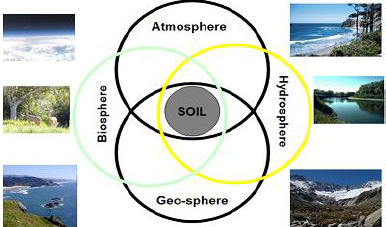
Steps
in Protecting Environment
Sustainable
Land Management
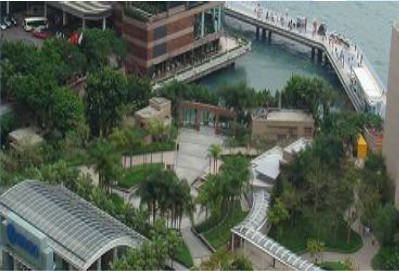
Water Sensitive Urban Design (WSUD)
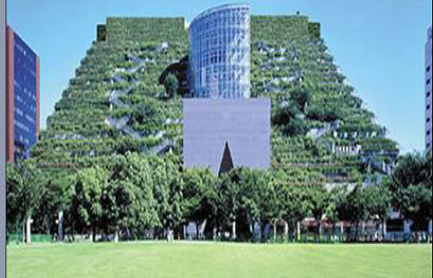
Importance
of Regulations and Legislations
Adoption
of ESD-Through Land Use Change-An Australian Example
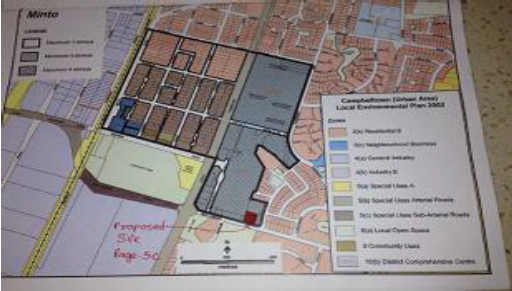
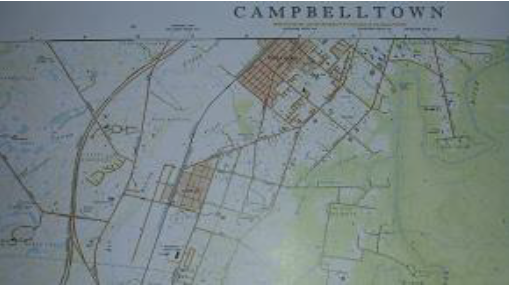
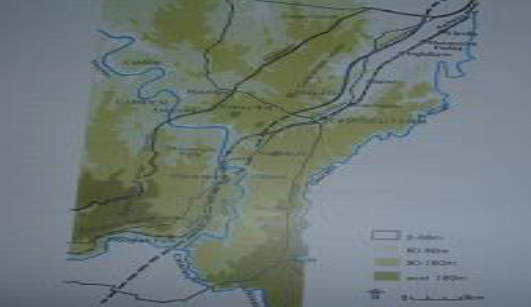
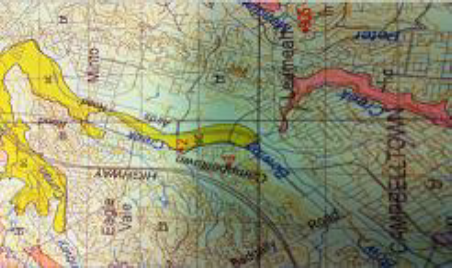



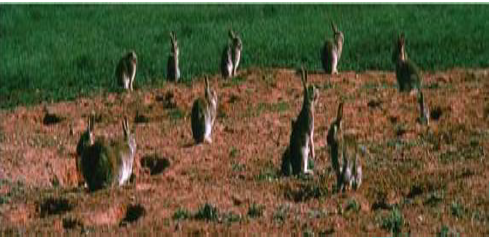
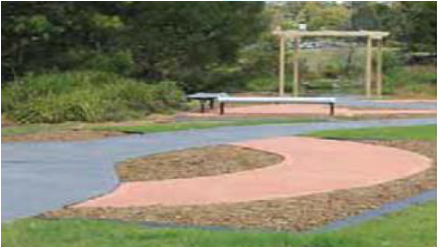
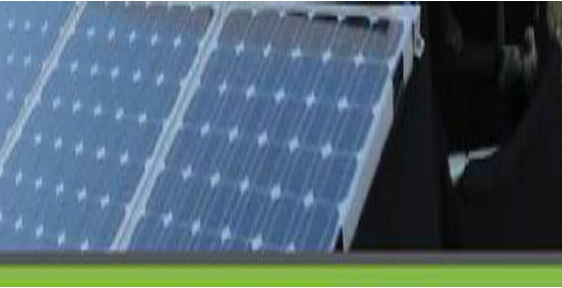
Possible
Constraints, Limitations and Attributes
Dealing
with Contamination
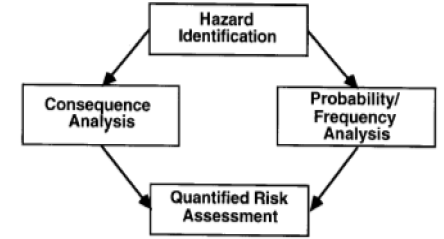
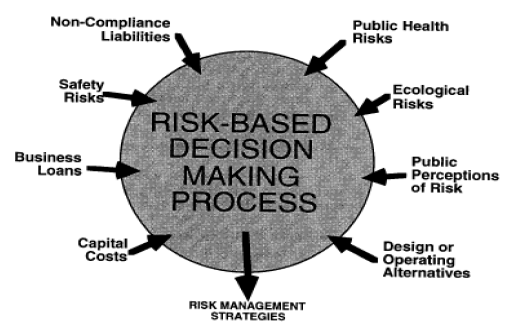
EPA
Clearance Certificate
Summary
and Conclusions
Recommendations
and Suggestions
References
Keywords